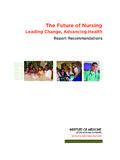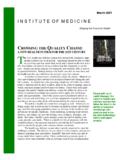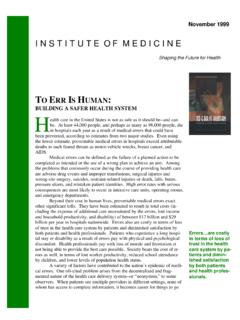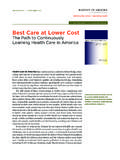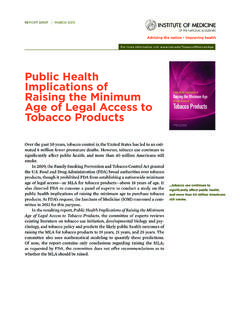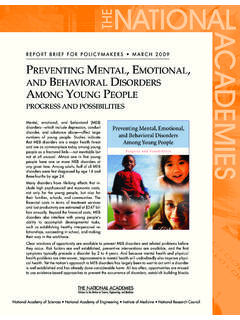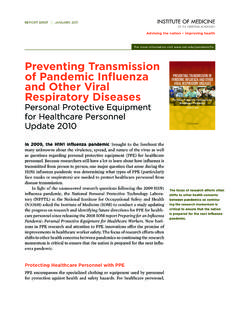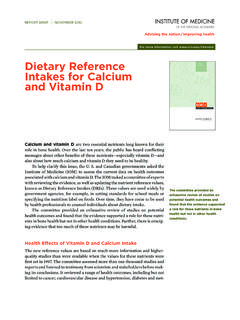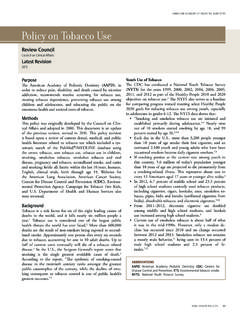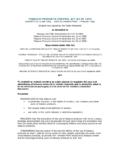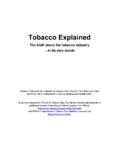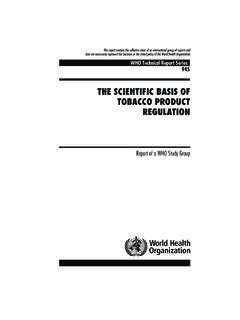Transcription of preventing a tobacco epidemic in africa
1 preventing a to bacco epidem ic i n africaA CAll for EffECtivE ACtion to Support HEAltH, SoCiAl, And EConomiC dEvElopmEntTable of contentsIntroductIon1An epidemic in the Making2 Governance4 Competing Priorities4 FInancIal resources For tobacco control6the role oF cIvIl socIety organIzatIons and InternatIonal development partners7understandIng and overcomIng the tobacco Industry s tactIcs9 Economic Tactics of the tobacco Industry9 Political Tactics of the tobacco Industry11 Targeting Women and Youth12 Women12 Youth12health and development15 Trends of tobacco Use in Africa15 Health Effects19 Consequences for Development20 preventing and Reducing the Health Effects of tobacco Use22 Reducing Demand through Taxation22
2 Protection from Exposure to Secondhand Smoke24 Bans on tobacco Advertising, Promotion, and Sponsorship24 Packaging and Labeling of tobacco Products25 Education, Communication, Training, and Public Awareness26tobacco leaF productIon28 Negative Consequences of tobacco Production28 Health Effects28 Environmental Effects29 Socioeconomic Effects30 Mititgating the Negative Effects of tobacco Production31 Alternative Livelihoods31 Protecting the Environment32overarchIng recommendatIon33reFerences35acknowledgem ents45 ATSA African tobacco Situation AnalysisAU African UnionDALYs Disability-Adjusted Life YearsFCA Framework Convention AllianceFCTC Framework Convention on tobacco ControlGATS Global Adult tobacco SurveyHIV/AIDS Human Immunodeficiency Virus/Acquired Immune Deficiency SyndromeIDRC
3 International Development Research CentreITGA International tobacco Growers AssociationNCD Noncommunicable DiseaseNGO Nongovernmental OrganizationsSTEPS STEP wise approach to SurveillanceUN United United StatesVALD Vision for Alternative Livelihood DevelopmentWHO World Health OrganizationAcronyms introduction Although tobacco use continues to be the leading global cause of preventable death, there are proven, cost-effective means to combat this deadly epidemic . WHO Report on the Global tobacco epidemic , 2013In April 2013, the Network of African Science Academies convened a committee of experts to discuss the evidence, obstacles, and opportunities for implementing and enforcing tobacco use prevention and control policies in africa .
4 The committee, consisting of 16 experts drawn from 8 countries in africa , met for 3 days in Kampala, Uganda, with funding administered by the Campaign for tobacco Free Kids. Each distinguished committee member was selected for his or her in-depth tobacco -specific knowledge in areas including agriculture, policy, economics, social science, health, and the environment. The committee reviewed and assessed the evidence on the state of tobacco use and tobacco production and their detrimental health, economic, and environmental effects in africa . The committee also reviewed efforts currently under way to prevent and control tobacco use, including the status of adoption and ratification of the World Health Organization (WHO) Framework Convention on tobacco Control (FCTC).
5 Based on this evidence, the committee reached consensus on actions that African leaders and other stakeholders should take to combat this growing threat. This report presents the committee s evidence-based recommendations for tobacco control in africa . It outlines strategies that should place tobacco control policy on the African leadership agenda, and also calls upon other groups, such as civil society organizations, to share in the responsibility of protecting those most vulnerable to misleading and deceitful messaging by the tobacco In this report, tobacco industry refers primarily to large multinational companies that purchase the bulk of tobac-co leaves, but may also include smaller regional or national companies that purchase tobacco leaves and manufacture tobacco products, as well as the representatives of these companies.
6 An epidemic in the MakingTobacco is estimated to kill up to one of every two users. No other risk factor carries such a high mortality rate and costs more than half a trillion dollars in economic damages annually (WHO, 2013b). As the use of tobacco has declined in high-income countries, the tobacco industry has increasingly turned to low- and middle-income countries, particularly in africa , Asia, and Eastern Europe, to recruit new users. Without comprehensive tobacco prevention and control policies, it is estimated that smoking prevalence in the African region will increase by nearly 39 percent by 2030, from percent in 2010 to percent2 the largest expected regional increase globally (Blecher and Ross, 2013; Mendez et al.)
7 , 2013). Increasing prevalence, combined with sustained economic growth and changing population dynamics, could drive tobacco consumption in africa to double within the next 10 years (Baleta, 2010). The morbidity and mortality caused by such an increase in tobacco use and exposure could have devastating effects on health, development efforts, and economic growth in African recognition of the threat posed by tobacco use and exposure, member states of WHO adopted the FCTC in 2003. This international treaty prescribes evidence-based, cost-effective interventions for reducing the supply of and demand for tobacco to prevent disease, disability, and mortality caused by tobacco use (see Table 1).
8 Most countries in africa have signed and ratified the FCTC, but they have not yet fully implemented the interventions described in the treaty s provisions (see Table 2). Until now, the comparatively low number of current tobacco users in africa may explain the false sense of security and complacency in this area, especially in the context of other infectious and noninfectious disease priorities that African nations face. However, prompt implementation of interventions described in the FCTC could reduce projected smoking prevalence by half and mitigate the health effects, as well as the economic and development costs, of an African tobacco -related disease epidemic (Blecher and Ross, 2013; Mendez et al.)
9 , 2013).2 An increase from to ( percentage points) represents a percent increase in the use of tobacco hAs declined in high-income countries, the tobacco industry hAs increAsingly turned to low- And middle-income countries, pArticulArly in africa , AsiA, And eAstern europe, to recruit new users. TABLE I: Summary of Framework Convention on tobacco Control ProvisionsProvisionsArticleMeasures to Reduce DemandPrevent tobacco industry interference in public policy and tax measures6 Nonprice measures to reduce the demand for tobacco7 Protection from exposure to environmental tobacco smoke8 Regulation and disclosure of the contents of tobacco products9, 10 Packaging and labeling (including the use of graphic warning labels)
10 11 Education, communication, training, and public awareness12 Comprehensive ban and restriction on tobacco advertising, promotion, and sponsorship13 tobacco dependence and cessation measures14 Measures to Reduce SupplyElimination of the illicit trade of tobacco products15 Restriction of sales to and by minors16 Support for economically viable alternatives for tobacco growers and farm workers17 Protection of the EnvironmentProtection of the environment and health of people18 SOURCE: WHO, 2: Number of African Countries That Have Achieved Full Implementation of Selected Demand-Reducing Measures prescribed in the Framework Convention on tobacco Control FCTC ProvisionMeasure of AchievementCountries That Have Fully Implemented FCTC ProvisionMonitor tobacco use and prevention policiesRecent, representative and periodic data is available for both adults and youthMauritius, Togo, SwazilandProtect from tobacco smokeAll public places completely smoke-freeBurkina Faso, Chad, Congo, Namibia, SeychellesOffer help to quit tobacco useNational quit line.
